Abstract
Six college students participated in matching-to-sample tasks. Conditioned emotional response (CER) training consisted of pairing a tone with a “painful” level of shock. Three of the subjects demonstrated response suppression, one subject showed facilitation, and two showed no change. Analysis of response rate during the tone interval indicated that, for those subjects who showed response suppression, the decrease in response rate was greatest immediately before onset of the unconditioned stimulus. This temporal discrimination was similar to that obtained with infrahumans.
Full text
PDF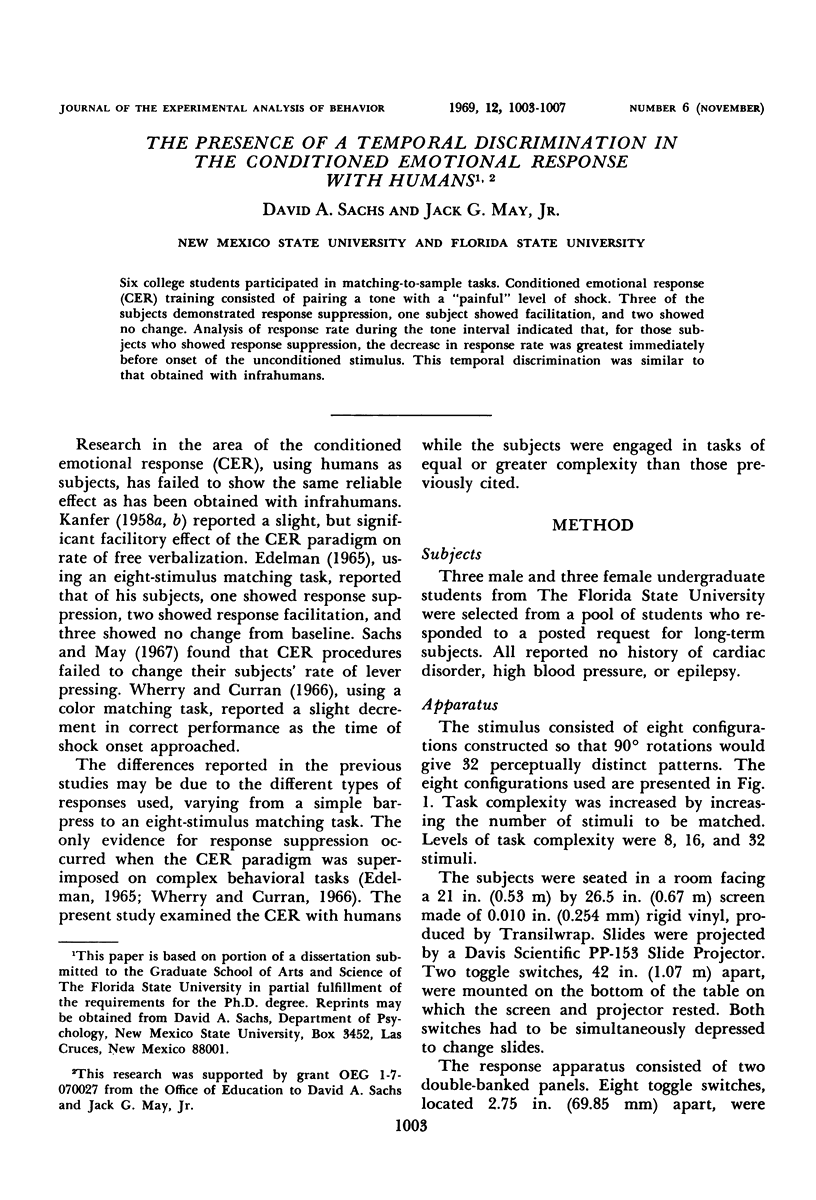
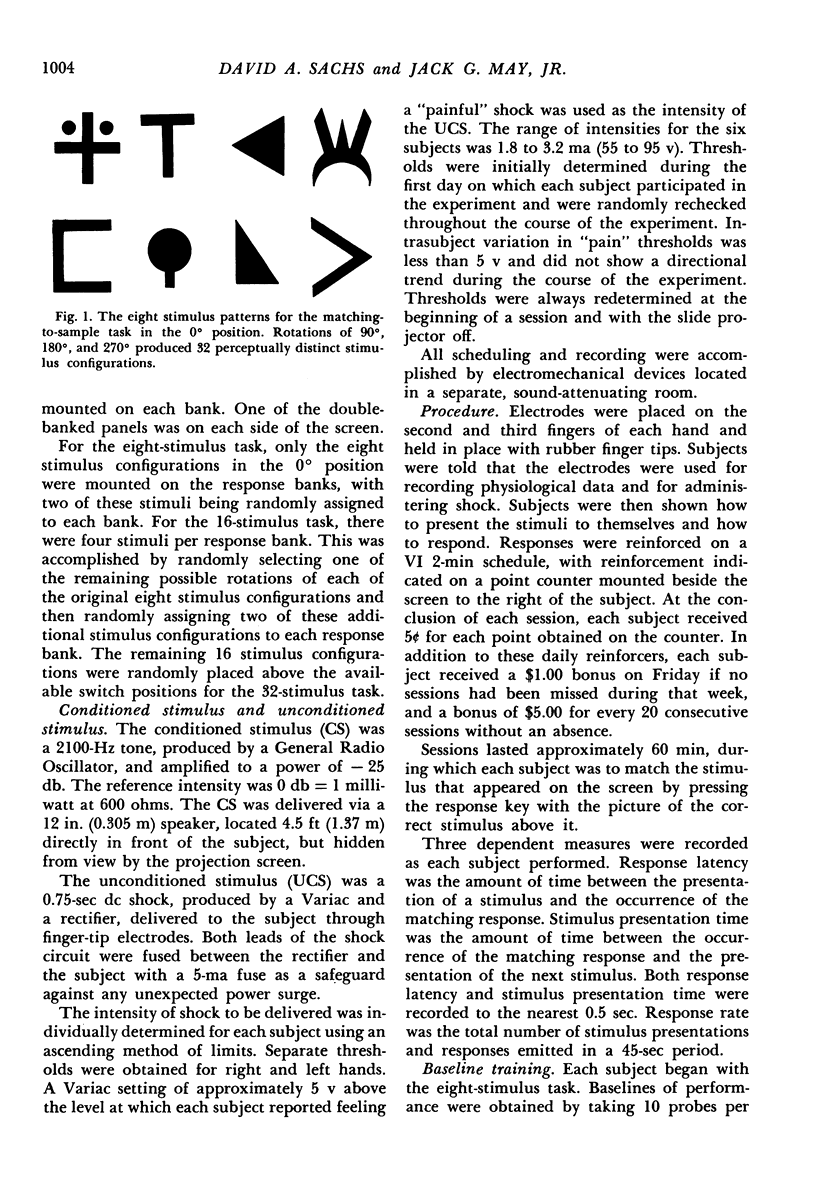
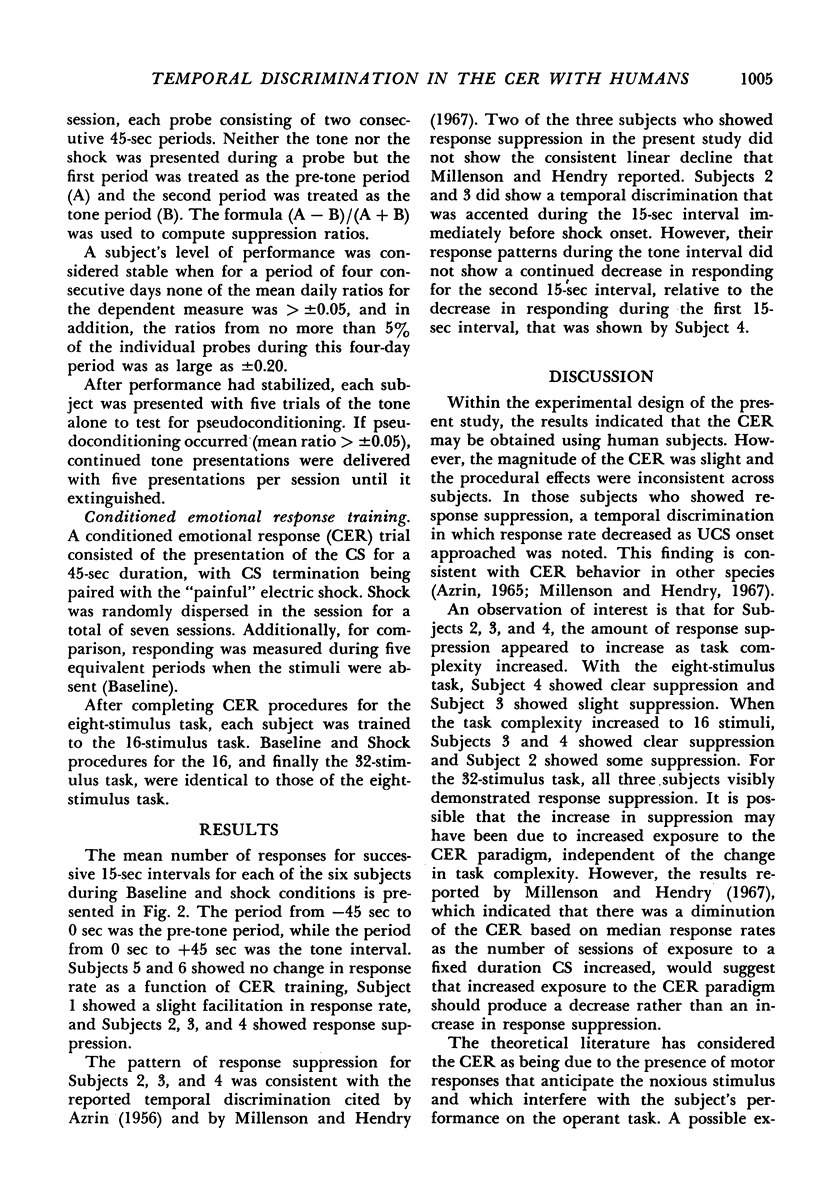
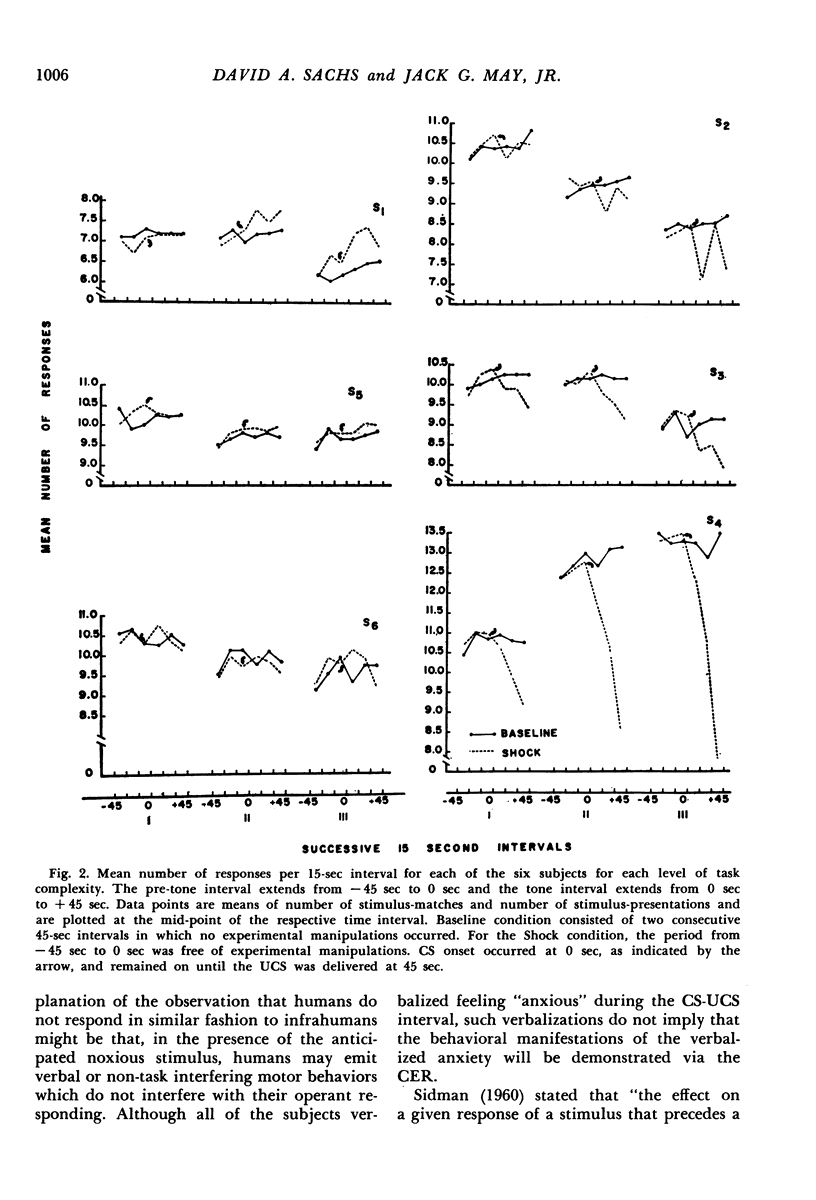
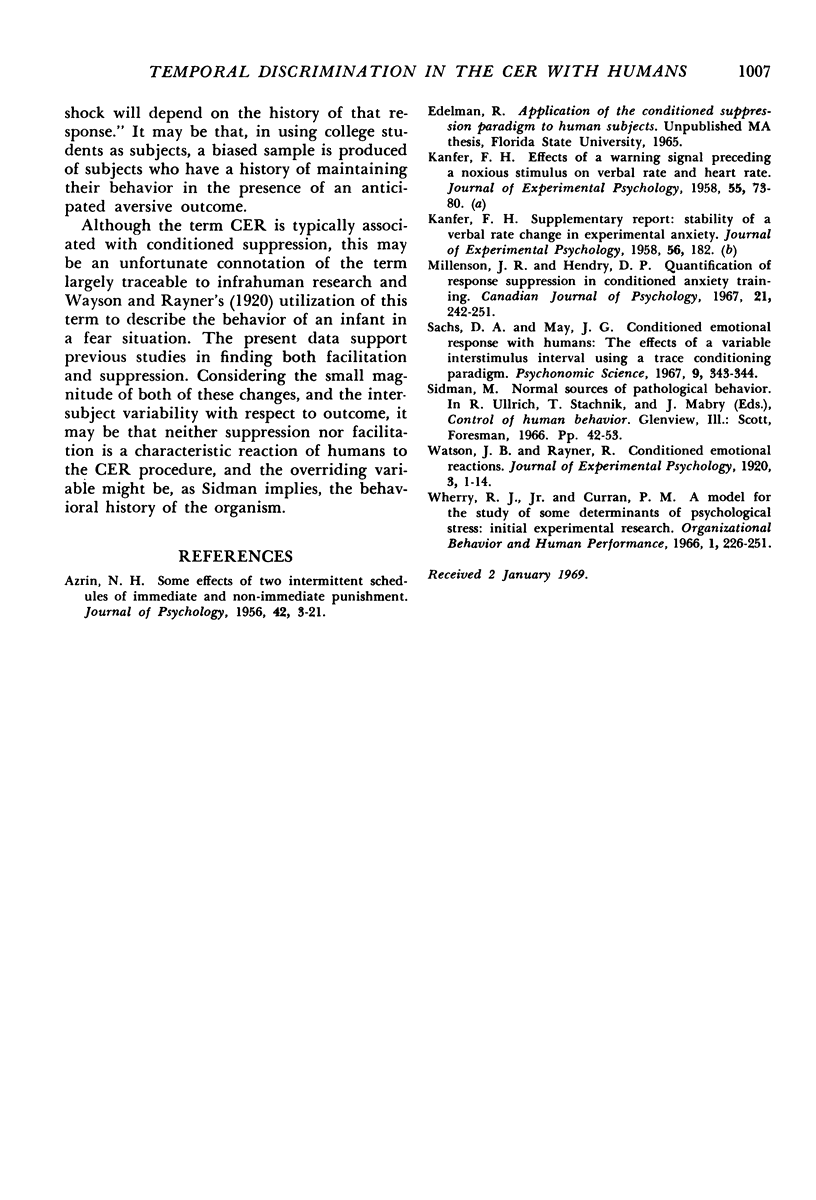
Selected References
These references are in PubMed. This may not be the complete list of references from this article.
- KANFER F. H. Effect of a warning signal preceding a noxious stimulus on verbal rate and heart rate. J Exp Psychol. 1958 Jan;55(1):73–80. doi: 10.1037/h0040217. [DOI] [PubMed] [Google Scholar]
- KANFER F. H. Supplementary report: stability of a verbal rate change in experimental anxiety. J Exp Psychol. 1958 Aug;56(2):182–182. doi: 10.1037/h0042180. [DOI] [PubMed] [Google Scholar]
- Millenson J. R., Hendry D. P. Quantification of response suppression in conditioned anxiety training. Can J Psychol. 1967 Jun;21(3):242–252. doi: 10.1037/h0082981. [DOI] [PubMed] [Google Scholar]


